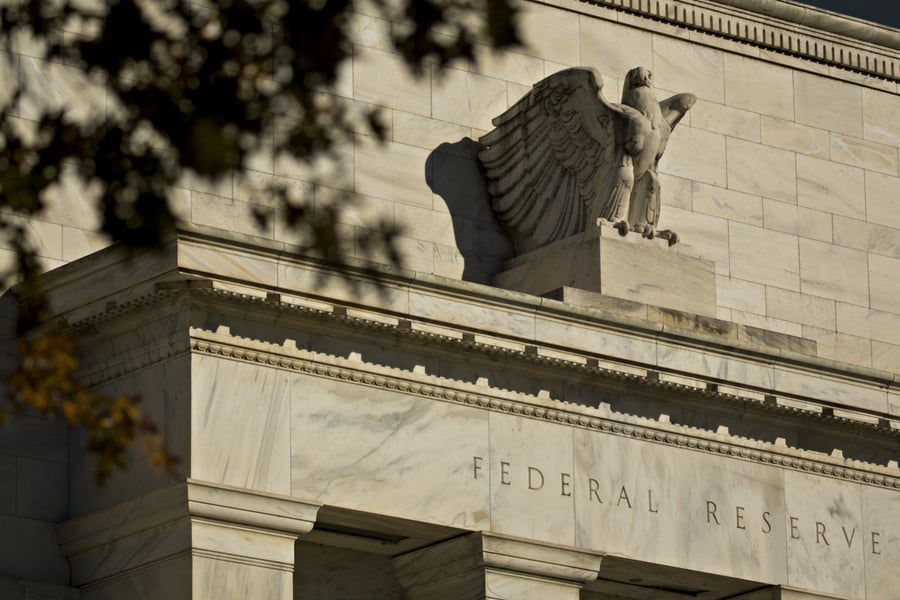It's abundantly clear that Americans as a whole are experiencing the best economy since the Great Recession. U.S. employers are adding so many workers that more people are growing encouraged to enter the labor force. Wage growth is well above the average of the past decade. Corporate earnings remain rock solid.
For bond investors, though, the question is never really about how things are going but what the economic picture will look like in the coming years. And they're growing more convinced that this might be as good as it gets.
By now, you've surely read about
the flattening Treasury yield curve. When the spread between short- and long-dated maturities turns negative, it historically portends a recession. And while it's as close to zero as it has been since 2007, whether inversion happens in two months or two years is up for debate. And even then, some downturns take longer to materialize than others.
Perhaps that's why the chatter among bond traders is about a different curve, using eurodollar futures. The world's most actively traded money-market derivatives give a more precise estimate of when the good times may wind down.
http://www.investmentnews.com/assets/docs src="/wp-content/uploads2018/07/CI11627079.PNG"
Eurodollars, which are hyper-sensitive to the expected path of Federal Reserve rate increases, now signal that central bankers will have to stop raising interest rates in late 2019 or early 2020, with the benchmark well short of 3.375 percent, which officials have projected by the end of 2020.
That's in stark contrast to what eurodollars indicated in mid-May, at the peak of the bond market sell-off. At that point, the slope of the curve was firmly positive through 2021, and even then, further gradual Fed tightening was priced in for the years to come. Fed funds futures contracts themselves tell a similar story.
All this confirms the sobering reality that the U.S. is fast approaching the end of its drawn-out economic expansion. Intuitively, investors know this. Consistent job gains of 200,000 or more a month, with the unemployment rate already near a 48-year low, are not sustainable. Highly leveraged companies can't handle interest rates that are markedly higher than where they are now. There's a reason that any number of market pundits will talk about a recession. It's just hard to pin them to an exact date.
Of course, one quirk about the eurodollars curve is that it remains flat for almost four years. As Bloomberg News's Liz Capo McCormick and Edward Bolingbroke wrote recently, strategists at Wells Fargo Securities see that as an "exceedingly unlikely" scenario. It would effectively mean that over those years, the economy wouldn't be strong enough for the Fed to boost rates, but it would be doing well enough that it wouldn't need to cut them. What's more likely is traders don't want to make big bets on what will happen so far into the future.
Either way, the market's projected interest-rate path helps explain why longer-term Treasuries are luring buyers after a painful start to the year. If traders are right, and the Fed will have to stop after a few more hikes, then suddenly 3% appears to be about the best yield investors can expect over the coming decade.
As I wrote at the end of June, it's becoming trendy again to call a top for Treasury yields. And that was before President Donald J. Trump threatened to escalate
a trade war by imposing tariffs on every single Chinese import into America.
Rick Rieder, global chief investment officer for fixed income at
BlackRock Inc., said on Twitter on Friday that the payrolls report showed "the underlying strength of the economy." But he went on to question what the next phase of jobs growth will look like and "whether the pace of policy 'normalization' will have to change in 2019."
If the bond market is to be believed, the Fed may soon have to go from cruise control to a grinding halt. Enjoy the boom times while they last.







